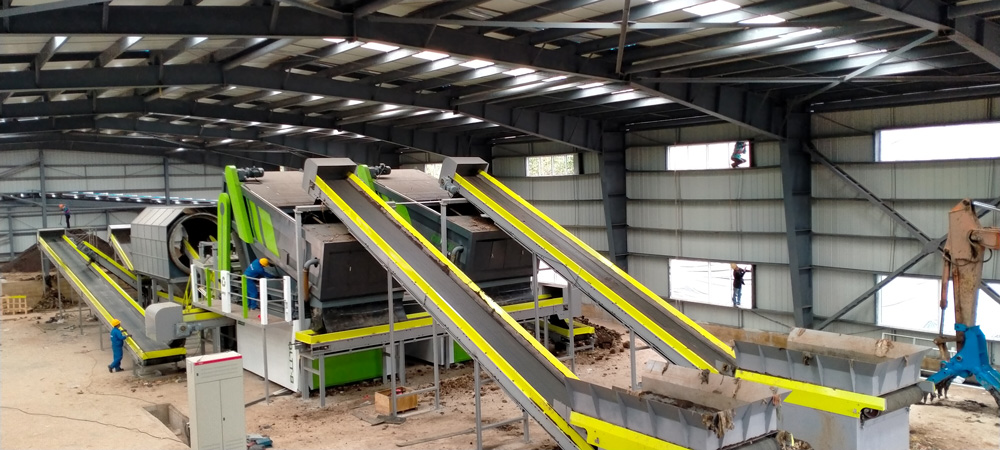 Time:2025-03-17
Time:2025-03-17
 Source:青绿环境
Source:青绿环境
With the acceleration of global urbanization, the issue of waste disposal has become increasingly urgent. How to efficiently and environmentally handle the growing amount of domestic waste and industrial residues has become a pressing problem to be solved. Against this backdrop, waste screening equipment, with its unique advantages, has become an indispensable part of modern waste management systems.

What is waste screening equipment?
Waste screening equipment is a mechanical device specifically designed to separate solid waste of different sizes and types. Through a physical screening process, these devices can classify mixed waste according to characteristics such as size and density, thereby enabling the effective recycling and reuse of resources. Common waste screening methods include vibrating screening, drum screening, and air screening.
The importance of waste screening
Effective waste screening not only reduces the amount of waste that ultimately needs to be landfilled or incinerated but also extracts valuable materials, such as metals, plastics, and organic matter. For example, organic waste can be used to produce bio-fertilizers, while the separation of recyclable materials helps reduce the pressure on natural resource extraction. Moreover, the screening process also helps improve the efficiency of subsequent treatment steps (such as composting and waste-to-energy incineration) and reduces environmental pollution.
Technological progress drives industry development
In recent years, with the development of technology, the performance of waste screening equipment has been significantly improved. The application of new materials has made screens more durable and less prone to clogging; intelligent control systems can automatically adjust operating parameters to adapt to different types of waste; and efficient separation technologies have greatly increased material recovery rates. Meanwhile, equipment manufacturers are also continuously exploring more energy-saving and environmentally friendly design solutions to reduce secondary pollution generated during the screening process.
Looking ahead to 2025 and beyond, with the increasing environmental awareness of the public and the growing emphasis of governments around the world on sustainable development goals, it is expected that waste screening equipment will be widely applied in more regions. Technological innovation will continue to lead the direction of industry development, bringing more efficient and cost-effective solutions and promoting the development of a circular economy. Faced with increasingly severe environmental challenges, we have reason to believe that, through continuous technological innovation and policy support, waste screening equipment will play a more critical role in future waste management and contribute to building a green planet.
In this process, everyone should be aware of the impact of their actions on the environment and actively participate in the practical actions of waste sorting and recycling to create a cleaner and better living environment together.













 Prev
Prev











